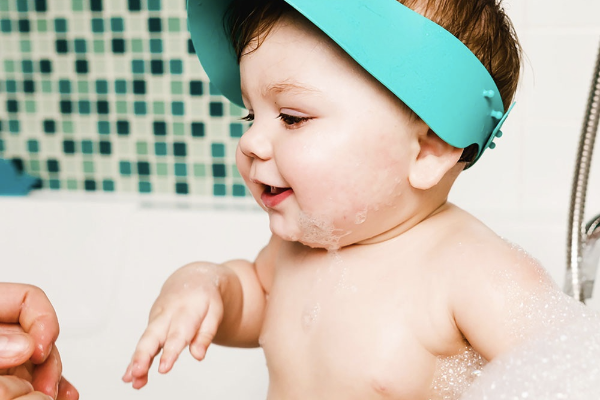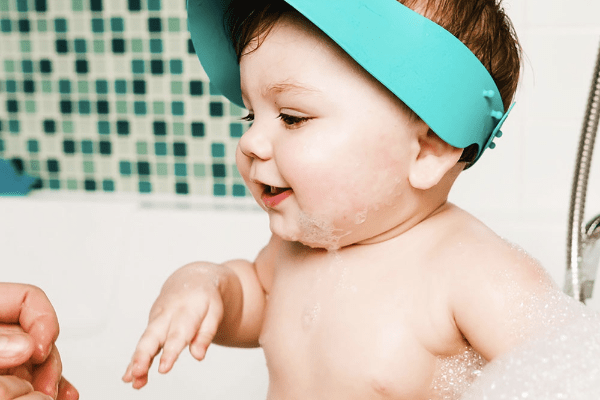
January is National Bath Safety Month, so now is a good time for a few tips on keeping baby safe in the bathtub. Babies are wiggly little people. They don’t follow instructions and when they’re all wet, they become slippery, wiggly little people! Not all babies love baths, but most do and as long as you follow a few rules for tub time, you will too.
Sponge bathing is the right place to begin
There is a lot to be said for a good sponge bath for newborns. After all, they don’t have the ability to regulate their body temperatures very well so a full immersion might be more than they can handle! Sponge bathing allows you to keep baby warm with towels and only wash the parts that need it: face, diaper area, and hands.
Full immersion isn’t recommended until the umbilical cord stump falls off anyway, as it is best to keep that area dry to avoid complications like infection. Wait the week or two it will take for the stump to dry up and fall off before considering a full bath for baby.
Moving on to a baby bath is your next step
When you and baby are ready to move beyond sponge bathing, the next best bet is a baby sized bath. Whether you put a baby bath in the tub or go directly to the kitchen sink, choose a warm environment and make sure that you can can stand or sit comfortably. Attempting to get the baby out of the bath if you’re awkwardly positioned could be dangerous! Remember: slippery and wiggly!
Babies don’t need a daily bath; in fact, too many baths can dry out their skin. Every few days, fill up a baby tub or the kitchen sink with around three or four inches of warm water. Why a baby bath? A standard bathtub is hard to manage until baby can sit up. A baby tub will give you the ability to control the water depth and baby’s movements, with its gentle slope.
- Have a hand supporting the head and neck as you slip them in, feet first. They can get used to the water more easily this way, which is less likely to trigger crying!
- Start washing at the top and work your way down; and don’t use too much soap, as it can be drying. Less is more in this case.
- When done, lift them out the same way they went in and get them wrapped up in a warm, snuggly towel.
- Don’t let bath time run long: the water will cool quickly and baby won’t enjoy that!
Since you can’t step away from a baby in a bath for even a second—children have drowned in less than an inch of water!—have all the things you’ll need handy:
- Towels; more than one is a good idea… just in case!
- A thermometer designed for baths, to make sure that the water temperature isn’t too hot or too cold.
- A soft face cloth for washing all the parts.
- Mild, baby formula soap.
- A plastic cup for pouring water on their heads and on their bodies throughout the bath, which helps keep them warm.
- A shampoo cap, which keeps the soap out of your baby’s eyes when rinsing.
- A bath toy, for older kids.
- Fresh diaper and clothes.
When can you transition baby to a standard tub?
When your baby can sit without being held up, you can transition to a regular tub. They are still wiggly and slippery though, so you still need to be very careful before, during and after!
With all these tips, both you and your baby can enjoy bath time—safely.
